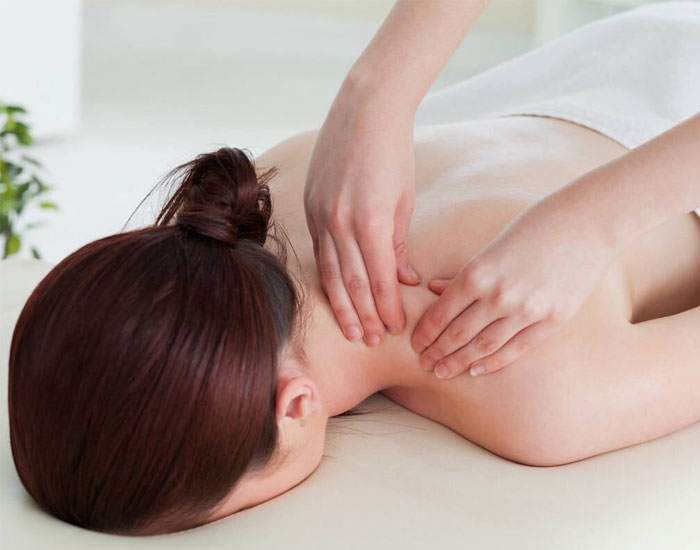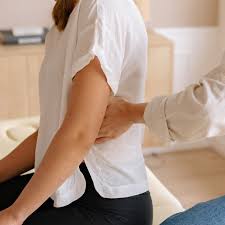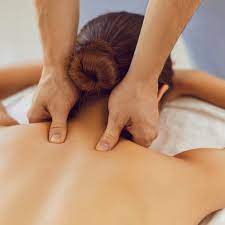

Forward head posture (FHP) is a modern-day dilemma, thanks to long hours spent staring at screens or hunching over smartphones.
This posture issue not only causes neck pain and headaches but also contributes to long-term spinal misalignment.
Fortunately, osteopathy offers a holistic and effective approach to correcting FHP.
In this article, we will explore how osteopathy helps realign your posture and restore balance, using a variety of manual techniques.
We shall also look at real-life examples and discuss how osteopathy can make a significant difference in managing and correcting forward head posture.
This Article Covers the Following Points:
- Understanding Forward Head Posture
- Osteopathy’s Approach to Assessing Forward Head Posture
- Techniques Used by Osteopaths to Correct FHP
- Real-Life Success Stories
- Long-Term Benefits of Osteopathy for Posture
- Conclusion: Maintaining Posture Health
Understanding Forward Head Posture
Forward head posture occurs when the head juts out in front of the shoulders, putting excessive strain on the cervical spine.
This is commonly a result of modern habits such as prolonged screen time and sedentary work, which cause certain muscles to tighten while others weaken.
The imbalance can lead to issues like tension headaches, shoulder pain, and even nerve compression.
An osteopath for posture focuses on addressing these root causes, providing a comprehensive solution beyond just alleviating symptoms.
Osteopathy’s Approach to Assessing Forward Head Posture
The first step an osteopath takes is a thorough assessment of the patient’s posture.
They look at how the individual stands, sits, and moves to identify any misalignments or muscle imbalances.
The aim is to understand the underlying issues that contribute to FHP.
According to sources like the Carl Todd Clinic, osteopaths also use diagnostic techniques such as observing joint flexibility and range of motion to determine the extent of the misalignment.
In some cases, imaging studies like X-rays are recommended to gain a more accurate picture of the spine’s alignment.
An important aspect of osteopathic assessment involves considering the patient’s medical history and lifestyle.
This holistic view allows osteopaths to tailor their approach, ensuring that any treatment addresses not just the symptoms but the lifestyle factors that may be contributing to poor posture.
Techniques Used by Osteopaths to Correct FHP
Osteopaths use a variety of manual techniques to treat forward head posture, with each approach designed to target different aspects of the musculoskeletal system:
Soft Tissue Manipulation: This technique involves gentle massaging and stretching of the muscles, ligaments, and tendons around the neck and shoulders. By releasing tension, osteopaths increase mobility and ease discomfort. This method is particularly effective in addressing tight muscles like the sternocleidomastoid and suboccipital muscles that often pull the head forward (Mayfair Osteopathy).
Joint Mobilization: Osteopaths work on the joints of the cervical and thoracic spine to improve range of motion and flexibility. Mobilizing these joints allows the spine to return to its natural curvature, reducing the strain that FHP places on the upper back and neck.
Osteo Cranial Therapy: Cranial osteopathy, a specialized technique focusing on the skull and upper neck, is used to release tension and promote relaxation. This approach is especially helpful for patients who experience tension headaches and stress due to FHP (OsteoWellbeing).
High-Velocity Low-Amplitude (HVLA) Thrusts: For some cases, osteopaths may use HVLA thrusts to realign specific joints in the cervical spine. This quick, precise movement helps reset the spine’s alignment, providing immediate relief for many patients (Affinity Wellness).
Muscle Energy Techniques (MET): In MET, the patient contracts certain muscles against resistance provided by the osteopath. This approach helps correct muscle imbalances by strengthening weakened areas and loosening overly tight muscles.
Real-Life Success Stories
Consider Emma, a 40-year-old office worker who spent long hours at her desk.
She began experiencing persistent neck pain and frequent headaches.
After consulting an osteopath, she learned that her forward head posture was the root cause of her discomfort.
The osteopath performed a series of soft tissue manipulations and cranial osteopathy sessions over several weeks.
Emma also received postural exercises to do at home, like chin tucks and shoulder blade squeezes, to reinforce her treatment.
Within a few months, she noticed significant relief in her symptoms, and her posture visibly improved.
Another example is Daniel, a 50-year-old who had developed tech neck from excessive use of his smartphone.
His osteopath incorporated joint mobilization and MET into his treatment plan.
By working on both muscle flexibility and joint mobility, Daniel was able to regain his natural cervical curvature and alleviate his discomfort.
Long-Term Benefits of Osteopathy for Posture
One of the greatest advantages of osteopathic care is its holistic and long-term approach.
Osteopathy does not just aim to achieve forward head posture fix temporarily; it provides the tools and knowledge needed for ongoing improvement.
Here are some long-term benefits of osteopathy for correcting forward head posture:
Improved Postural Awareness: Osteopathy helps patients become more aware of their body mechanics. By understanding the impact of daily habits, such as workstation ergonomics or smartphone use, patients can actively make changes to maintain good posture.
Enhanced Mobility and Flexibility: Regular osteopathic sessions improve joint mobility, making it easier for patients to move freely and maintain an upright posture without discomfort.
Reduced Pain and Discomfort: Osteopathic treatments, such as soft tissue manipulation and cranial techniques, address the pain associated with FHP, providing lasting relief.
Ergonomic and Lifestyle Guidance: Osteopaths offer advice on how to set up workstations and practice good habits, such as taking breaks and using ergonomic tools, to support posture correction.
Maintaining Posture Health
Osteopathy offers an effective and holistic approach to correcting forward head posture.
By using a combination of manual techniques, patient education, and lifestyle modifications, osteopaths help patients achieve and maintain better alignment.
However, the key to success is consistency.
Patients must follow their osteopath’s advice and incorporate recommended exercises into their daily routines to ensure long-term results.
For anyone struggling with forward head posture, consulting an osteopath can be a transformative experience.
With the right treatment and guidance, you can realign your posture, reduce pain, and improve your overall quality of life.
References:


